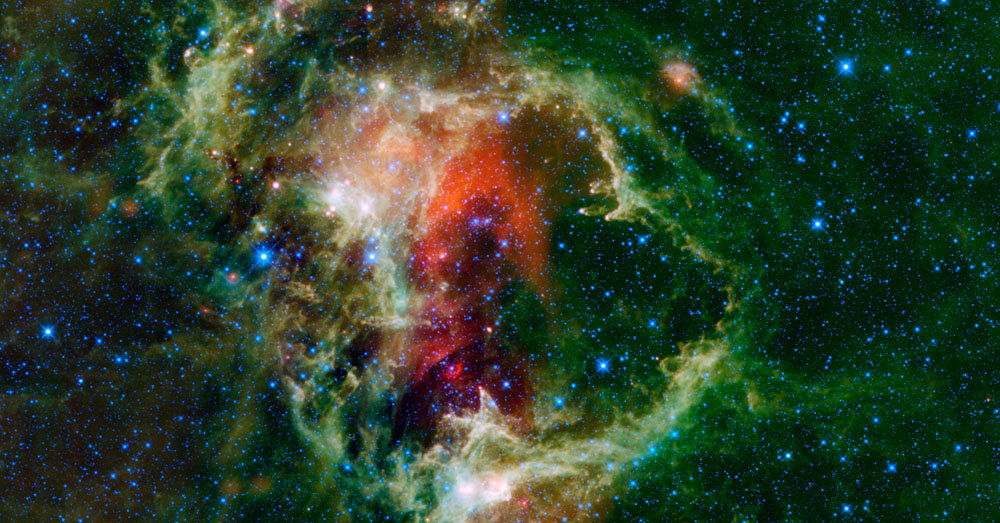
© Robert Mallozz/Marshall Space Flight CenterExplosive twist
Mr. Spock is dying. Fortunately for the crew of the USS
Enterprise, the Spock in question is not the real one, but an evil mirror-image version created in a freak transporter malfunction. This Spock's back-to-front body can digest only right-handed amino acids; meanwhile, like all organic matter, the food around him is made of left-handed amino acids. He is starving in the midst of plenty.
This plot line from the 1970 novel
Spock Must Die! - the first literary spin-off from the
Star Trek TV series - highlights one of life's fundamental mysteries. Why does biology use only one of two mirror-image forms in which most complex molecules can occur? The latest pop at an answer weaves astrophysics, particle physics and biochemistry into a startling proposal: that the stellar explosions known as supernovae are to blame.
"It is an intriguing idea," says Daniel Glavin, an astrobiologist at the NASA Goddard Flight Center in Greenbelt, Maryland. It is certainly a novel turn in this twistiest of tales: the story of how life came to be left-handed.


